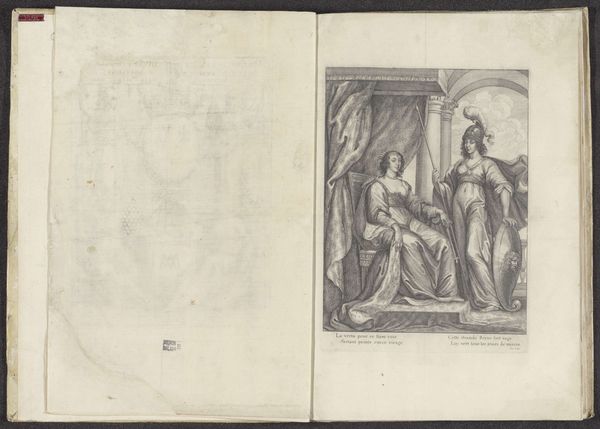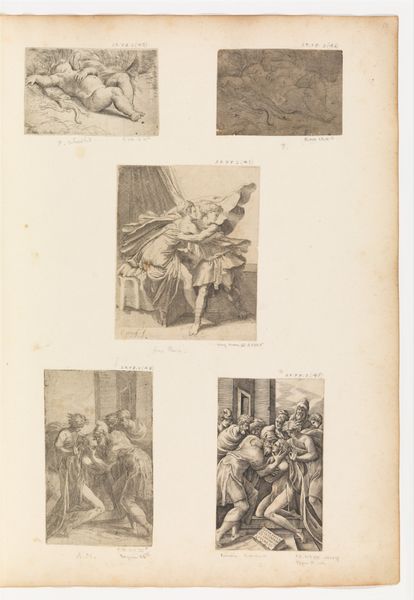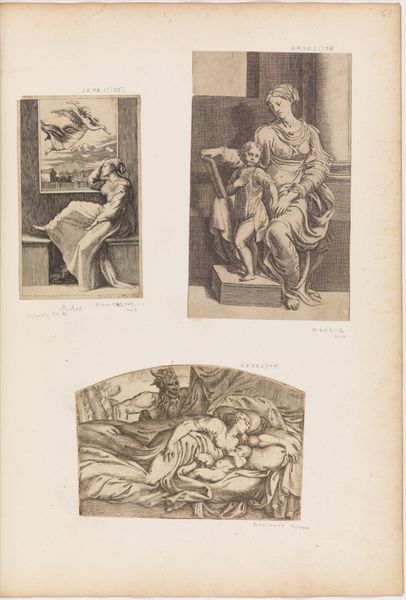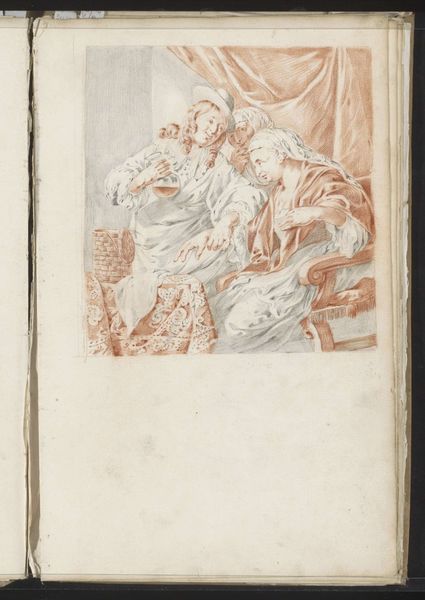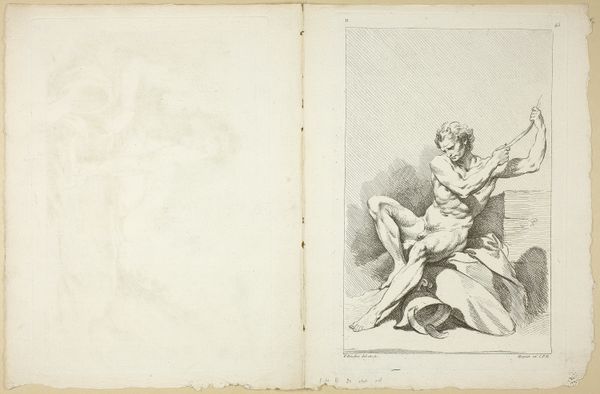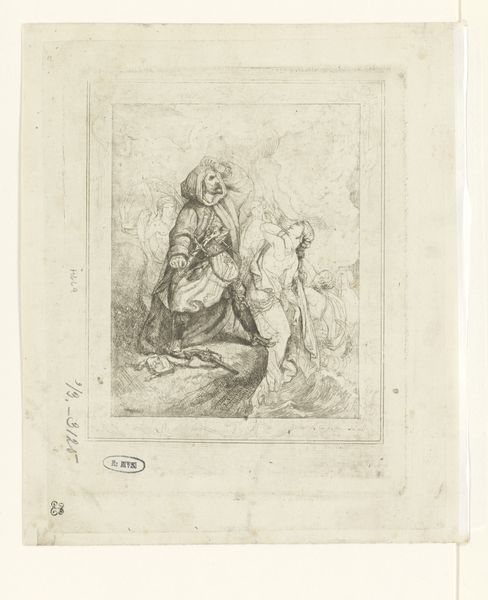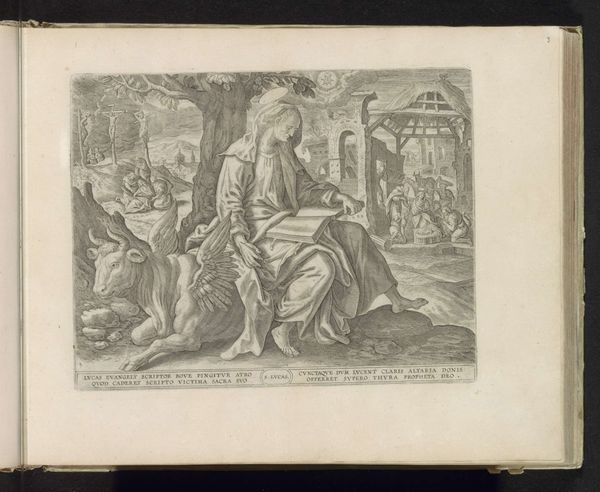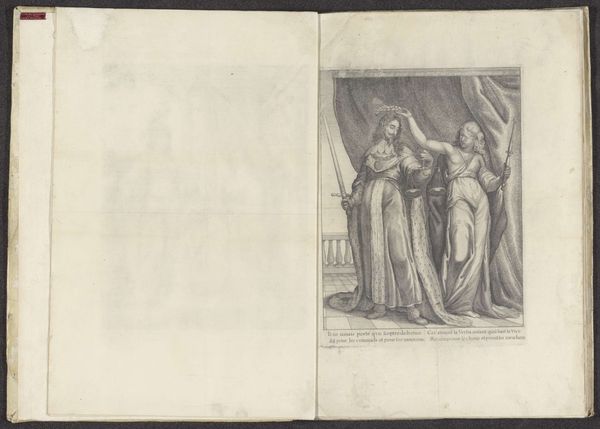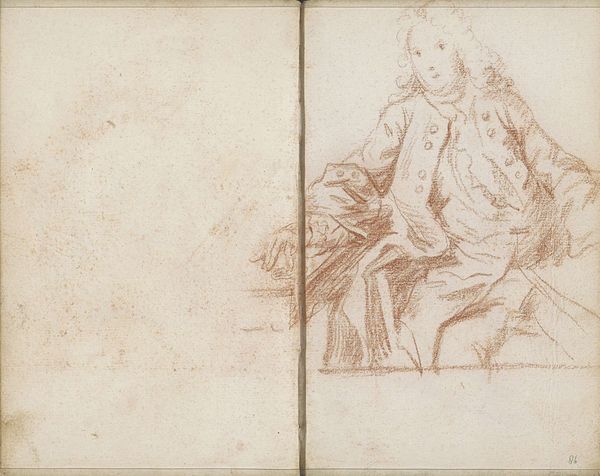
Dimensions: height 243 mm, width 360 mm
Copyright: Rijks Museum: Open Domain
Curator: This page features two separate drawings on a single sheet, a "Portret van een vrouw en Venus, Amor en Mars", created by Harmen ter Borch sometime between 1660 and 1687. It is currently held at the Rijksmuseum. Editor: They are dramatically different. The woman's portrait feels immediately more Baroque—moody, with stark tonal contrasts. Whereas the scene with Venus has an almost Mannerist flatness. Curator: Indeed. The portrait uses watercolor and ink on paper, while the Venus is rendered with finer, sparser lines, emphasizing outline and shape over volume. Consider how the background works in each piece. Editor: Ah yes, where the woman has a nearly impenetrable dark thicket, a place of secrets, the Venus scene opens into idealized architecture, pure light and air. Curator: Both speak to the symbolism of love and beauty within a period of shifting cultural values. The portrait hints at earthly beauty and societal role. What are we to infer, in contrast, about Venus here? Editor: Perhaps, it's a playful nod to classical ideals filtered through the sensuousness of the Baroque. Venus, with a sandal kicked off in abandon, suggests not just beauty but also human vulnerability, a rejection of stoicism. The artist even signed his name beside Venus’ form—perhaps the only area he saw true artistic liberation. Curator: Look closer. Amor's posture almost copies her—another reflection! But it does bring up a point. Are the stark contrasts in depiction merely technical, or are they pointing to changing perspectives on feminine virtue and beauty in his era? It begs a question of what values Ter Borch really admired. Editor: These stylistic contrasts suggest a transitional aesthetic moment, caught on one page, two different studies—beauty reflected but transformed. Curator: Harmen ter Borch was playing with different traditions while perhaps searching for what best defined femininity to him. Editor: Whether earthly or ideal, both depictions, with their unique visual rhetoric, showcase Ter Borch’s nuanced approach to capturing human beauty, form, and cultural ideals.
Comments
No comments
Be the first to comment and join the conversation on the ultimate creative platform.

